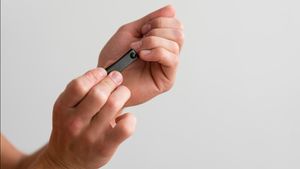YOGYAKARTA The pelvic floor muscles support the bladder. In addition to home' for a group of muscles, tissue, ligament, nerves, and blood vessels, the pelvic floor also contributes to the strength of the core holding the intestines, organs, and for women holding the vagina and uterus. So much of the basic responsibility of the pelvic, everyone needs to keep it working effectively. For this reason, avoid the following habits that can damage the pelvic floor muscles.
According to pelvic physical therapist Corey Silbert Hazama, DPT, OCS, CFMT., sitting cross-legged should not be done too often and for too long. He added, forcing one side to turn the pelvis forward to be able to cross the knee, making the pelvis rotate. It can also change the position of the Sits bone to uneven. If the pattern is asymmetric, it will make it difficult for him to return to his original direction.
When muscle formation, including the stomach muscles around the diaphragm, must be done properly. The reason is, if you do it wrong, it can damage the pelvic floor muscles. When the stomach deflates, explained Hazama, this activity can prevent the pelvic floor from expanding and dropping. So during training and involving certain breathing patterns it is necessary to focus on the diaphragm muscles so as not to use the wrong foundation muscles.
When squatting down when urinating or urinating, both legs become the focus and the pelvic floor muscles contract to help stabilize. Hazama advice, when defecating, requires loosening the muscles and sfingter around the bladder so that the detrusor does its job properly. If it strains and makes an increase in the intra-abdoment to push the feces or urine out, it will accidentally make the muscles contract and not relax.
Similar to breathing or holding your breath, wearing a belt that is too tight to prevent the diaphragm from developing completely. The waist belt can narrow and create tensions and the mobility of the stomach muscle fasia layer.
It's okay to wear high heels, but don't overdo it often and for too long, the Hazama doctor's message was reported by Well+Good, Friday, August 11. Tumit as the focus causes the knee to stretch and push the pelvis forward. Although it looks like it improves the posture, it can create an unnatural posture and cause the posterior pelvis to stagnate and the anterior pelvis floor is elongated. This causes problems in the intestines and bladders.
Bowing has the same effect as wearing high heels. This postur inhibits the core muscles and changes the basic symmetry of the pelvic, the effects of pain arise.
Sitting and straining positions can be booming. Because when tightening the buttocks, holding your breath, or pulling the stomach to push the exits, it will put pressure on the pelvic floor muscles. This has the potential to make the pudenda nerve injured.
SEE ALSO:
That is a habit that can damage the pelvic floor muscles and needs to be changed immediately so that it does not have an effect on health problems and changes in posture.
The English, Chinese, Japanese, Arabic, and French versions are automatically generated by the AI. So there may still be inaccuracies in translating, please always see Indonesian as our main language. (system supported by DigitalSiber.id)


















